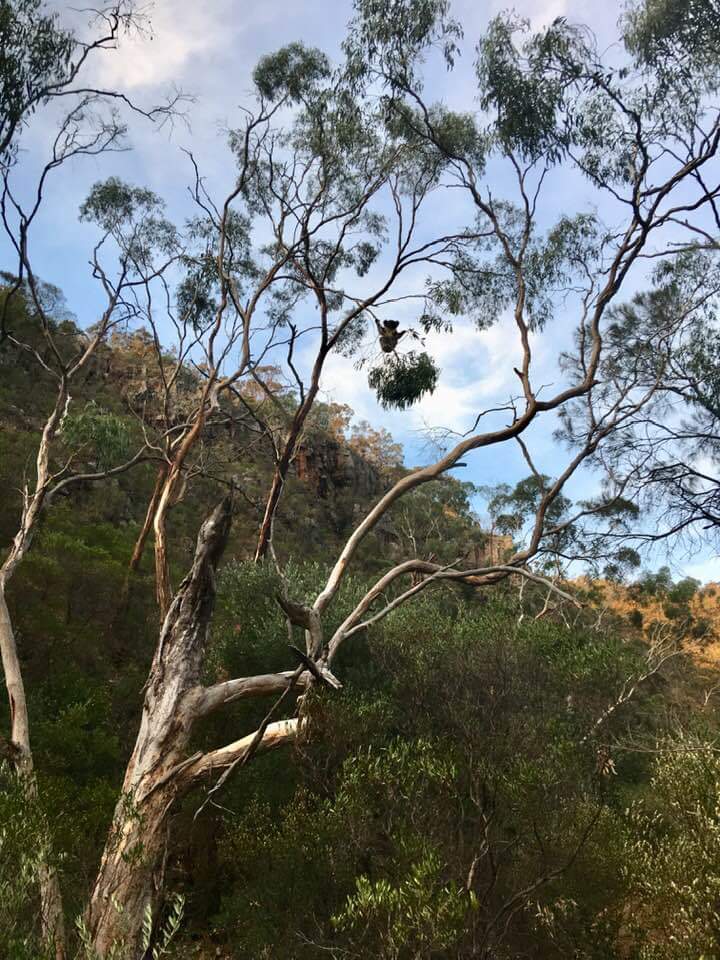Image by Meredith Reardon
I am afraid. My eyes fill a little, mostly at night when I consider my future, our future. I have lived a full life, more focussed on the world around me than my family. My lovely wife has channelled her energy to family and friends. Together we have stood easy in our space, even when apart.
We share some sadness; a fatal crash, estranged loved ones and health has become more fragile. We have a wealth of offspring who pluck our sense of being. We have always loved to live in the villages and spaces we moved in, with little concern for the future. We have had good parents, and siblings who have found their feet. My parents still go about their lives, playing bowls and music as they approach their centenary. My body is likely strong.
I have always anticipated my death a little, and felt vaguely cosy with the tears that I would share with my cherished sons and daughters and those grandchildren who had enjoyed exploring the opaque and cheeky thoughts of elders. Even the regrets that we didn’t do more together, that I didn’t show my love enough, or wasn’t there for some when I should have been, could be resolved in that final reckoning. If I was younger my one love in life would carry me, my family would lift my mood and surround me. Perhaps even some of the people I worked with would join the throng and replay forgotten moments. If I was older, the sheer number of offspring would sustain me and I would go easily.
With the news of this virus and my work amongst potential victims a new contagion has begun to haunt my dreams. It is bleak. What if my wife or I were to catch it and get sick? How would it be to need increasing support and finally, to know one of us could not recover? What then?
Would I die in an expensive shiny intensive care bed, my tubes and vital signs attended by masked and selfless strangers, fading into a world where a distant and sunless window occasionally showed a fleeting familiar face? Or less alone in a ward of others suffocating slowly while sharing our stoic denial or whispered acknowledgement of our very possible future? Perhaps I will be amongst a hoard in a warehouse, given what sustenance the conscripted carers can find. They may be the untidy recovered or people out to make some money to pay off recent debts.
Whatever the stage, whatever the course, we seem deemed to tackle this grim reaper alone. Any peace cut by sirens of the tiny oxygen meters on our fingers or the soon futile wailing of ambulances arriving at the barred doors below. Or the creaking of lines of makeshift beds and gasping neighbours. Alone in a sea of drowning strangers.
That is not what I want for me, for my family or anyone. Let me have a little of my own future, and the people I love. Even one to be with me will make me smile and wonder at what might have been and see inside another’s eyes. I think we can and we should.
But how?
Let households be the victim of this wanton infection, strong together within familiar walls. Let resilient children play with their snotty parents, and lovers lie with their fevered friends. They will joke and laugh and cough even as they feel a shared fear of the future. Take out the elders if they wish and test them, returning immediately if they have the little beast within and later if not. The children will wonder what the fuss is about and happiness will replace fear as each recovers, cared for by ones affected not at all or in a little way.
The home while coughing will need help to bring supplies. They will wave together through clean blue windows and call gratefully to the helpful neighbour who turns away. They might go outside in their garden or play music and sing in a balcony choir. Every now and then one will get very sick, and if there is somewhere better to be with a ventilator or new treatment, they can go. They can be visited there and kissed and hugged by their recovered family. And if all fails or they are making a slow recovery, they can go home if they wish to be cherished.
They say things will change with this king of germs. Perhaps it is a chance to discard the notion of health and even being as an individual experience.


